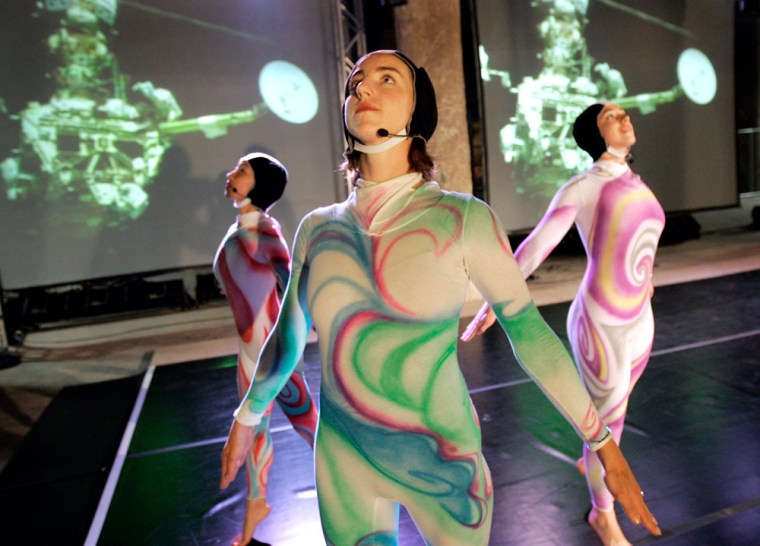Dancer and choreographer Sarah Morrison likes to think of spaceflight as especially thrilling when it’s part of a child’s dream.
She has turned her fancy into a dance, to be performed this weekend before a big-screen video backdrop from NASA’s space shuttle Discovery mission in 2000 and pictures of planets.
The 25-minute presentation, “Rendezvous,” was to be shown in downtown Cleveland at Ingenuity, the city’s second annual arts and technology festival. Discovery is currently on a mission to the international space station to make repairs and deliver supplies, scheduled to return on Monday.
Morrison produced the dance with the help of astronaut Pamela Ann Melroy and about eight hours of video provided by NASA.
A conversation with Melroy, who is due to command a shuttle mission to the space station next year, helped cement the concept.
“I was really getting goose bumps when she mentioned that the future astronauts who will eventually go to Mars are the children today,” said Morrison, 31 and the mother of a 2-year-old daughter. “It made me think about when I was a child and watching a blastoff on television and thinking, ’Wow!’ Now it seems like people forget just how amazing that is.”
Dreaming children
In the dance, three children dream about what it would be like to be on a space mission. Five other dancers wearing NASA-provided clean-room white jumpsuits emerge from the bed and portray a space team. The children start off in pajamas and end up in brightly colored, tight-fitting outfits.
The dance combines traditional ballet moves and more athletic modern dance steps. They range from expressing the force of a launch to the gentle flow of a spacewalk.
“We have a lot of very slow movements to give an appearance of floating,” Morrison said. “The beautiful thing about art is people are allowed to feel what they want to feel when they see it.”
Orbital ballet
Melroy, 44, has an interest in dance and has performed a few orbital ballet moves in microgravity. In a statement in the dance’s program, she says: “Being in microgravity changes everything, the way your body works and the way you move in relation to objects around you. You become a world class dancer, until you bump into a wall.”
Morrison studied the astronauts’ movements on the video of the 2000 mission to the space station. Melroy was a pilot on the flight.
“I did a lot of reading about her, as well as viewing all of the footage of her floating in space while putting her hair in a ponytail, which looked very complicated, and even performing a pirouette,” Morrison said.
Melroy is helping provide ground support for the current shuttle mission and was not available to discuss the dance, said NASA spokesman David DeFelice.
DeFelice said the only other similar NASA dance collaboration was through the Centennial of Flight Commission. “Wild Blue Yonder,” a Wolf Trap-commissioned work, was presented in 2003.
Morrison and her group, MorrisonDance collaborated with NASA for about 10 months. The festival funded the dance with $3,500.
